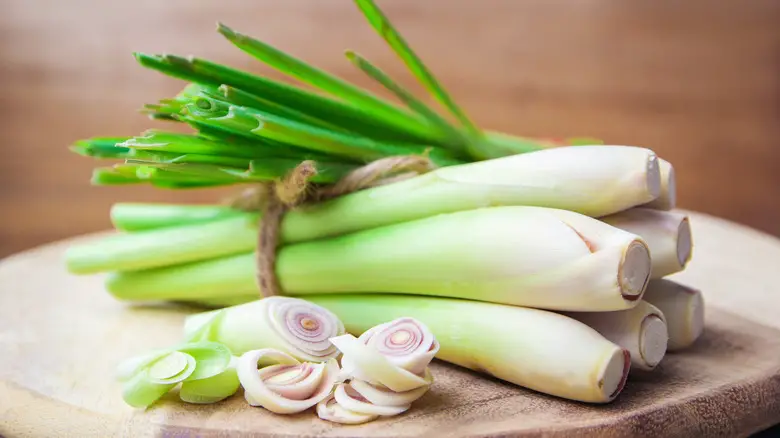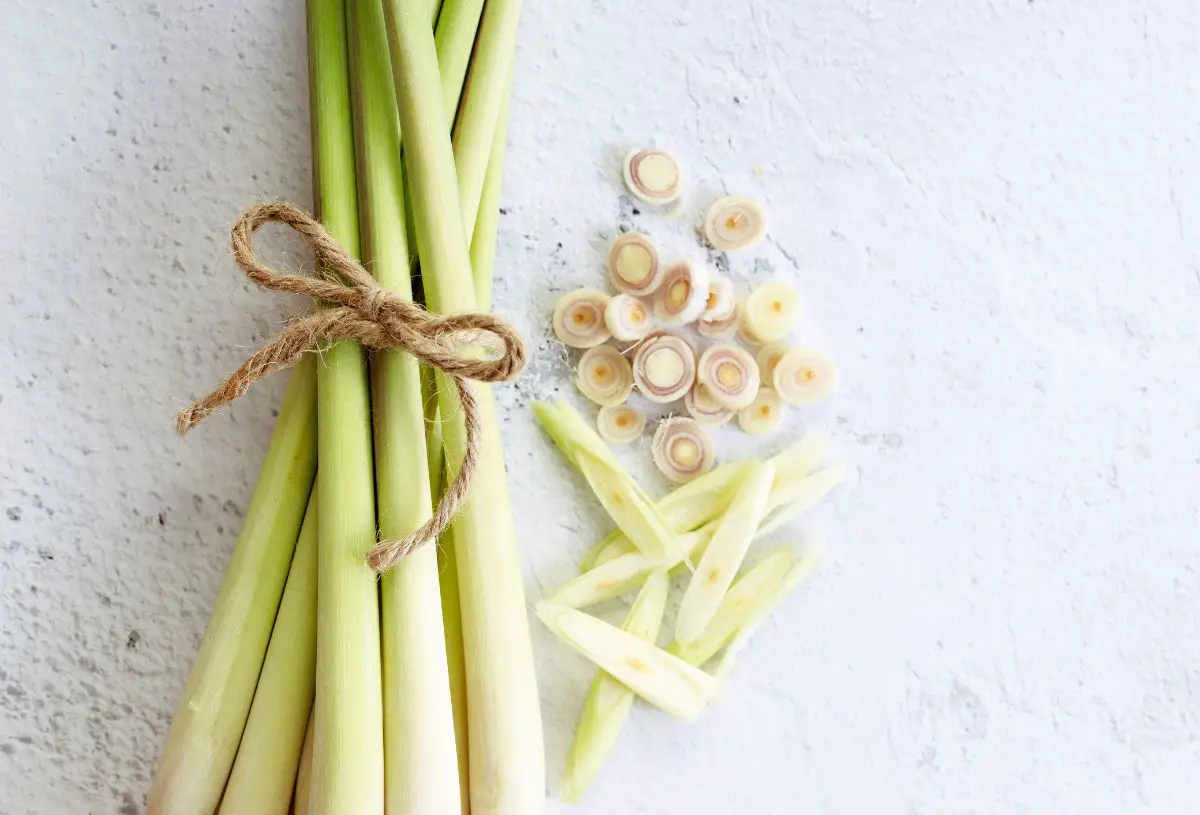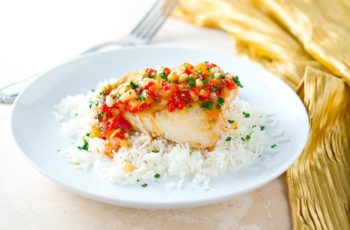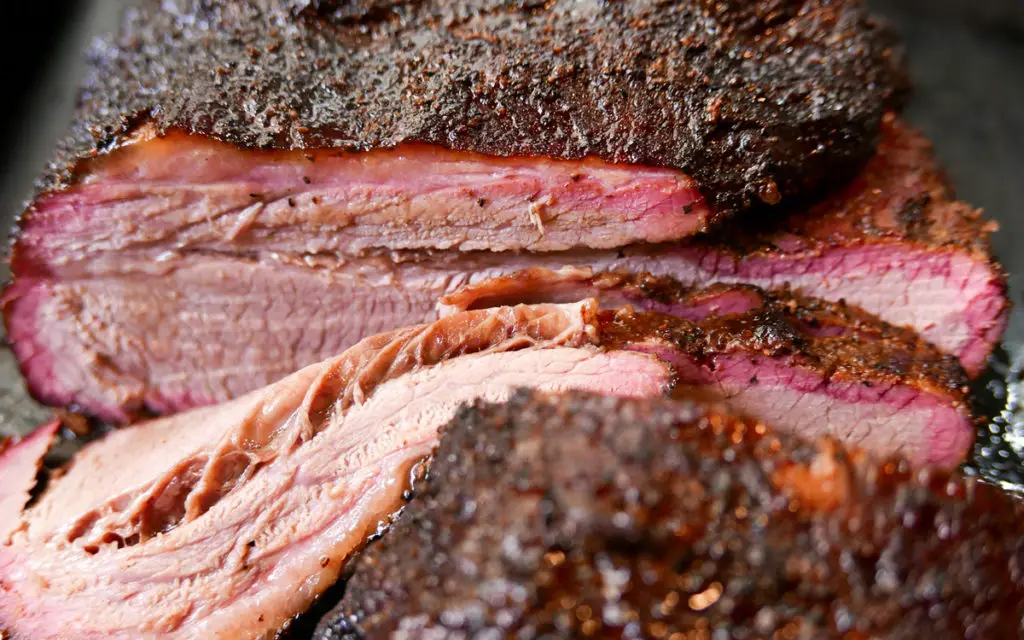
Looking for a zesty alternative to lemongrass? Explore these flavorful substitutes that will add a refreshing twist to your culinary creations.
9 Best Lemongrass Substitutes to Use for Cooking
If you don’t have lemongrass on hand or can’t find it near you, there are several substitutes that can bring a similar citrusy freshness to your meal. While no single ingredient can exactly replicate the unique flavor of lemongrass, these options come pretty close and can enhance the taste of your dish.

1. Lemon or Lime Zest: The zest from a lemon or lime adds the tang and freshness found in lemongrass. Substitute about 1/2 teaspoon of zest for each lemongrass stalk in your recipe.
2. Lemon Verbena: With its combination of bright, sweet, lemony, and herbaceous flavors, lemon verbena is a good replacement for lemongrass. Chop up one or two leaves for every stalk of lemongrass.
3. Lemon Balm: This milder herb provides a sweet citrusy flavor and works well as a substitute in desserts. Use three to four leaves for each lemongrass stalk.
4. Kaffir Lime Leaves: These lime leaves add a bright citrus flavor to dishes but lack the tangy and herbal notes of lemongrass. Add one kaffir lime leaf for each stalk of lemongrass and remove before serving.
5. Preserved Lemon: Preserved lemon has a citrusy flavor and tang that imitates lemongrass. Use about 1/2 preserved lemon for each stalk of lemongrass in your recipe.
6. Arugula Leaf and Lemon Zest: A combination of arugula leaf and lemon zest comes closest to replicating the complex flavor of lemongrass. Combine one arugula leaf and one teaspoon of zest to replace one stalk of lemongrass.
7. Cilantro Stalks and Fresh Ginger: The herbal freshness of cilantro combined with the tang of ginger can be a good substitute for lemongrass. Use two teaspoons each of chopped cilantro and grated ginger for each stalk of lemongrass.
8. Mint, Lime Juice, Ginger, and Sugar: Finely chop 6-8 mint leaves, squeeze two teaspoons of lime juice, add 1/4 teaspoon freshly chopped ginger and 1/4 teaspoon sugar. Let the mixture stand for 10 minutes before adding it to your dish as a substitute for lemongrass in any liquid-based recipe.
9. Lime Zest, Lemon Juice, and Lime Leaf: Use one teaspoon of lime zest and two teaspoons of fresh lemon juice as a substitute for lemongrass in any dish. Remove the hard mid-rib from one lime leaf before adding it to your recipe.
While dried lemongrass or lemongrass paste can also be used as substitutes, they won’t provide the same fresh and intense flavor as fresh lemongrass. Experiment with these substitutes to find the best option for your dish.
Single-Ingredient Lemongrass Substitutes
If you don’t have lemongrass on hand or can’t find it near you, there are several single-ingredient substitutes you can use to bring a similar citrusy freshness to your dish.
One option is to use the zest from a lemon or lime. The zest adds the tang and freshness that you find in lemongrass. Just be careful not to grate any of the white pith under the citrus fruit’s skin, as this will add a bitter taste to your dish. Substitute about 1/2 teaspoon of zest for each lemongrass stalk.
Lemon verbena is another herb that can be used as a substitute for lemongrass. It has a bright, sweet, lemony, and herbaceous flavor profile that closely resembles lemongrass. Chop up one or two leaves for every lemongrass stalk in your recipe.
If you’re looking for a milder substitute, lemon balm is a good option. It gives a sweet citrusy flavor and works well in desserts. Use three to four leaves of lemon balm for each lemongrass stalk in your recipe.
#1 Lemon or Lime Zest
If you don’t have lemongrass on hand, one of the easiest substitutes is lemon or lime zest. The zest from a lemon or lime adds the tang and freshness you find in lemongrass. Just be careful not to grate any of the white pith under the citrus fruit’s skin, as this can add a bitter taste to your dish. For each lemongrass stalk, substitute about 1/2 teaspoon of zest. You can use zest in almost any recipe that calls for lemongrass.
#2 Lemon Verbena
Lemon verbena is a herb that has a flavor profile similar to lemongrass. It has a combination of bright, sweet, lemony, and herbaceous flavors that make it a good substitute for lemongrass. However, it’s important to note that lemon verbena has an intense flavor, so you should be careful not to use too much of it as it can overpower your dish. Chop up one or two leaves of lemon verbena for every lemongrass stalk called for in the recipe. Lemon verbena can be used in curries, sauces, and tea to add a citrusy freshness.
#3 Lemon Balm
Lemon balm is a milder herb that gives a sweet citrusy flavor. It works really well as a lemongrass substitute in any dessert. You can use three to four leaves for every lemongrass stalk in the recipe. To help the lemon balm maintain its flavor, add the leaves towards the end of the cooking process.
#4 Kaffir Lime Leaves
Kaffir lime leaves are a great substitute for lemongrass when you want to add a bright citrus flavor to your dish. While they lack the tangy and herbal notes of lemongrass, they still provide a refreshing citrus taste. Kaffir lime leaves work especially well in dishes with a liquid base, such as soups and curries. Simply add one kaffir lime leaf for every lemongrass stalk called for in the recipe. Remember to remove the leaves before serving to avoid any unwanted texture in your dish.
#5 Preserved Lemon
Preserved lemon can be used as a substitute for lemongrass due to its citrusy flavor and tang. While the flavor is less intense than lemongrass, you can make the most out of this substitute by using both the peel and pulp of preserved lemon. For each lemongrass stalk in your recipe, you can use about ½ preserved lemon. This substitution works particularly well in seafood dishes.
Mixes To Use as a Substitute for Lemongrass
If you don’t have access to lemongrass, there are several mixes that you can use as a substitute to achieve a similar flavor profile. One option is to combine the zest from a lemon or lime with some herbs and spices. This combination will bring the tang and freshness of lemongrass to your dish.
Another mix that works well as a lemongrass substitute is a combination of cilantro stalks and freshly grated ginger. The herbal notes from the cilantro and the tang from the ginger create a flavor profile reminiscent of lemongrass. This mix is especially great in curries, soups, and broths.
For those who prefer a more complex flavor, combining mint leaves, lime juice, freshly chopped ginger, and sugar can bring all the different elements of lemongrass flavor together. This mix works best in liquid-based dishes like stews and curries.
#6 Arugula + Lemon Zest
Arugula and lemon zest can be combined to create a substitute for lemongrass that brings both herbal and citrus flavors to your dish. The peppery arugula leaf adds a fresh and herbal note, while the lemon zest provides the tangy citrus flavor. To use this substitution, combine one arugula leaf with one teaspoon of lemon zest for each lemongrass stalk called for in the recipe. This combination works well in stews, curries, soups, and seafood dishes, adding depth and complexity to your meal.
#7 Cilantro + Fresh Ginger
Cilantro and fresh ginger can be combined to create a good substitute for lemongrass. The herbal freshness of cilantro pairs well with the tangy flavor of ginger, replicating some of the taste elements found in lemongrass. It is recommended to use the more flavorful stalks of cilantro instead of the leaves for this substitute. Additionally, freshly grated ginger works better in replicating the unique taste of lemongrass. To create this substitute, combine two teaspoons of grated ginger with two teaspoons of chopped cilantro. This combination can be used in curries, soups, and broths as a replacement for lemongrass.
#8 Mint Leaves + Lime Juice + Ginger + Sugar
#8 Mint Leaves + Lime Juice + Ginger + Sugar
This combination of mint leaves, lime juice, ginger, and sugar brings together all the different elements of lemongrass flavor. Finely chop 6-8 mint leaves and squeeze two teaspoons of lime juice. Combine this in a bowl with ¼ teaspoon freshly chopped ginger and ¼ teaspoon sugar. Let the mixture stand for about 10 minutes before adding it to your dish. This substitute can be used in any liquid-based dish that calls for lemongrass.
#9 Lemon Juice + Lime Zest + Kaffir Lime Leaf
If you’re looking for a combination of citrus flavors to replace lemongrass, try using lemon juice, lime zest, and kaffir lime leaf. The lemon juice provides the tanginess, while the lime zest adds the citrusy freshness. The kaffir lime leaf brings a bright citrus flavor to the dish. This combination works well in soups, curries, and other liquid-based dishes. Just remember to remove the kaffir lime leaf before serving.

FAQ
Q: What is lemongrass and what does it taste like?
A: Lemongrass is a herb with a unique flavor profile that combines tangy citrus notes with herbal undertones. It brings a fresh and aromatic element to dishes without any bitterness or sharpness.
Q: Where is lemongrass commonly used?
A: Lemongrass is a popular ingredient in many Asian cuisines, particularly Thai, Vietnamese, and Malaysian recipes. It adds depth of flavor to curries, soups, stir-fries, and other dishes.
Q: What can I use as a substitute for lemongrass?
A: While there is no exact replacement for the flavor of lemongrass, there are several alternatives you can try. These include lemon or lime zest, lemon verbena, lemon balm, kaffir lime leaves, preserved lemon, arugula and lemon zest combination, cilantro stalks and ginger combination, mint-lime-ginger-sugar mixture, lime zest and juice with lime leaf, dried lemongrass or lemongrass paste.
Q: How do I use these substitutes in my recipes?
A: Each substitute has its own recommended quantity and usage instructions. For example, you can substitute about 1/2 teaspoon of lemon or lime zest for each lemongrass stalk required in a recipe. It’s important to note that some substitutes may have stronger flavors than others, so adjust accordingly to avoid overpowering your dish.
Q: Can I use dried or paste versions of lemongrass as a substitute?
A: Yes! Dried lemongrass or lemongrass paste can be used when fresh lemongrass is not available. While the flavor may not be as fresh and intense, it will still provide the desired taste profile to your dish.
Q: Are there any other herb alternatives I can try?
A: If you’re looking for more herb substitutes, check out our article on the 9 best substitutes for parsley. It provides options for adding flavor and freshness to your dishes when parsley is not on hand.
Can You Use Dried Lemongrass or Lemongrass Paste?
If you don’t have fresh lemongrass on hand, dried lemongrass or lemongrass paste can be a suitable substitute. While they may not provide the same fresh and intense flavor as fresh lemongrass, they will still add the distinct citrusy and herbal notes to your dish.
To use dried lemongrass, simply replace each stalk of fresh lemongrass in the recipe with one teaspoon of dried lemongrass. Alternatively, if you’re using lemongrass paste, use one tablespoon of paste for each stalk of fresh lemongrass.
Both dried lemongrass and lemongrass paste can be found in most grocery stores or online. They are convenient options when fresh lemongrass is not available, allowing you to still enjoy the unique flavor that lemongrass brings to your dishes.
Last Words on Choosing Substitutes for Lemongrass
When you’re unable to find or don’t have lemongrass on hand, there are several substitutes that can bring a similar citrusy freshness to your dishes. While none of these options can exactly replicate the unique flavor of lemongrass, they can come pretty close and enhance the taste of your meal. Whether it’s using lemon or lime zest, lemon verbena, lemon balm, kaffir lime leaves, preserved lemon, a combination of arugula and lemon zest, cilantro and ginger, mint, lime zest and juice, or dried lemongrass paste, each substitute brings its own elements to mimic the tang and herbal notes of lemongrass.
Experiment with these substitutes depending on the recipe you’re making and the flavor profile you desire. Remember that some substitutes may be more suitable for certain dishes than others. Don’t be afraid to get creative in finding alternatives that work best for you. With these options in mind, you can still enjoy the delicious flavors that lemongrass brings even when it’s not readily available.
In conclusion, while lemongrass is a unique and versatile ingredient, there are several suitable substitutes available. Lemon zest, lemon verbena, and lemon balm can provide similar citrusy flavors to enhance your dishes. Experimenting with these alternatives can still yield delicious results without compromising the overall taste of your recipe.
Learn More About Grilling
If you want to learn more about grilling, check out these other helpful resources!











